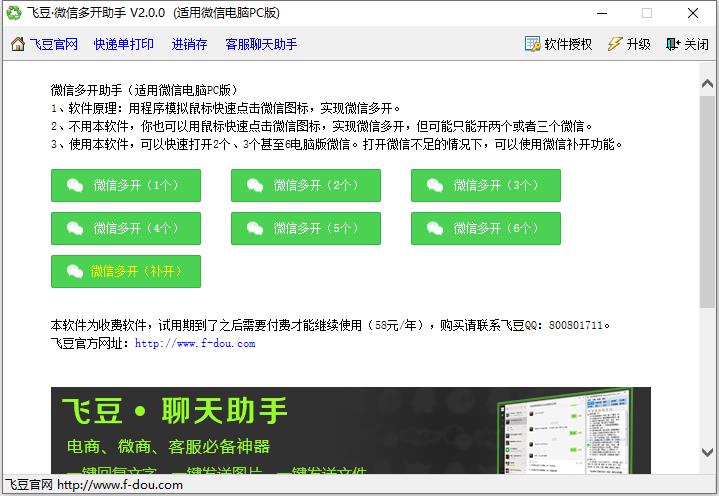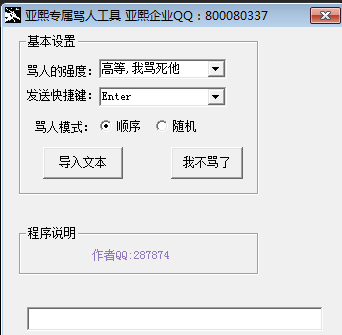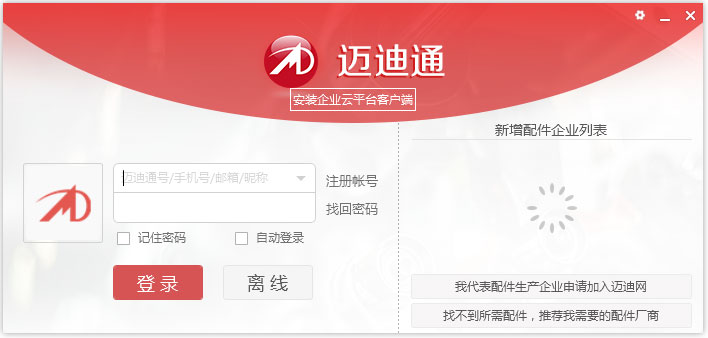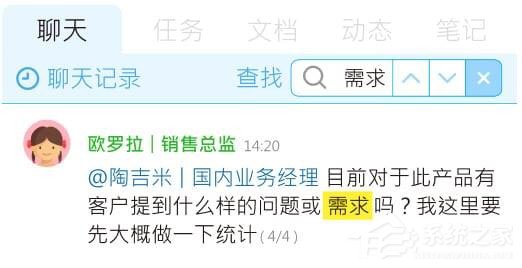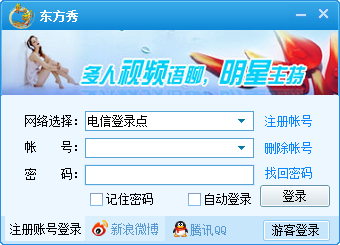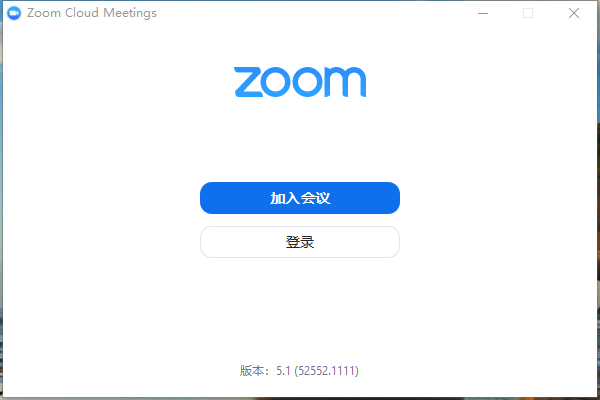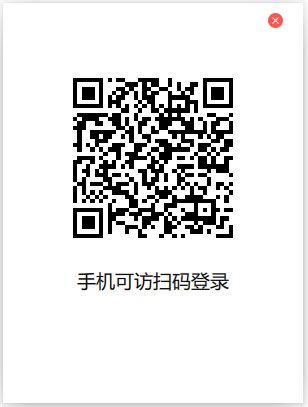(easywechat + Laravel 5.8)整理 PC 端微信扫码支付全过程
时间:2019-08-21 14:47
业务场景描述:
用户点击站点页面的 "购买" --> 即弹出二维码 --> 用户用微信扫描二维码 --> 根据微信的指引完成支付 --> 支付成功后页面提示支付成功并跳转
与微信之间的交互就三步:
1.传参,请求微信统一下单接口,获取支付二维码
2.接收微信的通知 (微信通过上一步参数中的回调地址,把支付结果发送给我的服务器)
3.请求微信查看订单的接口,如果支付成功就跳转页面
下面的记录也基本按照上面的流程.
准备工作:
安装 overtrue/laravel-wechat
composer require "overtrue/laravel-wechat:~5.0"
创建配置文件:
php artisan vendor:publish --provider="Overtrue\LaravelWeChat\ServiceProvider"
修改应用根目录下的 config/wechat.php 中对应的参数 (这部分直接 copy /paste 就行了) :
'payment' => [
'default' => [
'sandbox' => env('WECHAT_PAYMENT_SANDBOX', false),
'app_id' => env('WECHAT_PAYMENT_APPID', ''),
'mch_id' => env('WECHAT_PAYMENT_MCH_ID', 'your-mch-id'),
'key' => env('WECHAT_PAYMENT_KEY', 'key-for-signature'),
'cert_path' => env('WECHAT_PAYMENT_CERT_PATH', 'path/to/cert/apiclient_cert.pem'), // XXX: 绝对路径!!!!
'key_path' => env('WECHAT_PAYMENT_KEY_PATH', 'path/to/cert/apiclient_key.pem'), // XXX: 绝对路径!!!!
'notify_url' => env('WECHAT_PAYMENT_NOTIFY_URL',''), // 默认支付结果通知地址
],
// ...
],需要配置的就是上面这个数组里的内容,但其实都是需要在 .env 文件中配置的:
# wechat_payment WECHAT_PAYMENT_SANDBOX=false # 真正需要配置的就下面这四行 WECHAT_PAYMENT_APPID=xxxxxxxxxxxxxxx // 自己的 WECHAT_PAYMENT_MCH_ID=xxxxxxx // 自己的 WECHAT_PAYMENT_KEY=xxxxxxxxxxxxxxxxxxxx // 自己的 WECHAT_PAYMENT_NOTIFY_URL='test.abc.com/payment/notify' // 这个地址只要是外网能够访问到项目的任何地址都可以, 不是需要在微信那里配置的那种, 现在还不知道怎么定义没关系, 后面用到的时候自然就有了 SWAGGER_VERSION=3.0
安装 Simple QrCode 生成二维码的包
在 composer.json 文件中添加如下:
"require": {
"simplesoftwareio/simple-qrcode": "~2"
}在终端执行: composer update, 后面会用到.
------------------------------------------ 以上是准备工作,下面开始按照流程 ---------------------------------------
用户点击 "购买" 下单 --> 弹出二维码
这里是请求了微信的 统一下单 接口.
我处理的逻辑是:
用户发起购买请求时,先在创建支付日志里创建一条记录,等到用户完成付款,再创建订单记录.
新建一个 PaymentController 专门处理微信支付的逻辑 (跟 OrderController 是两码事). 对于用户点击 "购买" 的请求,我用 "place_order" 的方法处理,也就是在这里请求微信的 [统一下单] 接口.
页面上发起下单请求的部分
Html 部分:
(二维码的 modal 框就是根据 Bootstrap 的文档写的)
<button type="button" id="order" class="btn btn-secondary btn-block">
扫码支付
</button>
<!-- 二维码, 随便放在当前页面的那里都可以, 因为是通过 axios 控制, 请求成功后才会弹出的 -->
<div class="modal fade" id="qrcode" tabindex="-1" role="dialog" aria-hidden="true">
<div class="modal-dialog modal-sm" role="document">
<div class="modal-content bg-transparent" style="border:none">
<div class="modal-body align-items-center text-center">
<p class="modal-title" id="exampleModalLabel" style="color:white">微信扫码支付</p>
<br>
{{--生成的二维码会放在这里--}}
<div id="qrcode2"></div>
</div>
</div>
</div>
</div>JS 部分:
$('#order').click(function () {
/** 请求下单接口 **/
axios.get("/payment/place_order", {
params: {
id: "{{ $post->id }}"
}
}).then(function (response) {
if (response.data.code == 200) {
/** 把生成的二维码放到页面上 */
$('#qrcode2').html(response.data.html);
/** 弹出二维码 **/
$('#qrcode').modal('show');
/** 设置定时器, 即一弹出二维码就开始不断请求查看支付状态, 直到收到支付成功的返回, 再终止定时器 **/
var timer = setInterval(function () {
/** 在这里请求微信支付状态的接口 **/
axios.get('/payment/paid', {
params: {
'out_trade_no':response.data.order_sn,
}
}).then(function (response) {
if (response.data.code == 200) {
/** 如果支付成功, 就取消定时器, 并重新加载页面 */
window.clearInterval(timer);
window.location.reload();
}
}).catch(function (error) {
console.log(error);
});
}, 3000);
}
}).catch(function (error) {
console.log(error);
});
});创建路由
这里先把上面 JS 部分请求的两个路由都先写出来了,下面先说明第一个:
// 请求微信统一下单接口
Route::get('/payment/place_order', 'PaymentController@place_order')->name('web.payment.place_order');
// 请求微信接口, 查看订单支付状态
Route::get('/payment/paid', 'PaymentController@paid')->name('web.payment.paid');
PaymentController 里的支付逻辑
下面是具体的逻辑,用户点击支付后,先创建一条记录在 PayLog (用来记录支付的详细信息,所以这里还需要建 Paylog 的 model 和 migration, migration 的内容我附在最后了,都是微信返回的字段,基本可以直接 copy 来用的)
class PaymentController extends Controller
{
// 请求微信接口的公用配置, 所以单独提出来
private function payment()
{
$config = [
// 必要配置, 这些都是之前在 .env 里配置好的
'app_id' => config('wechat.payment.default.app_id'),
'mch_id' => config('wechat.payment.default.mch_id'),
'key' => config('wechat.payment.default.key'), // API 密钥
'notify_url' => config('wechat.payment.default.notify_url'), // 通知地址
];
// 这个就是 easywechat 封装的了, 一行代码搞定, 照着写就行了
$app = Factory::payment($config);
return $app;
}
// 向微信请求统一下单接口, 创建预支付订单
public function place_order($id)
{
// 因为没有先创建订单, 所以这里先生成一个随机的订单号, 存在 pay_log 里, 用来标识订单, 支付成功后再把这个订单号存到 order 表里
$order_sn = date('ymd').substr(time(),-5).substr(microtime(),2,5);
// 根据文章 id 查出文章价格
$post_price = optional(Post::where('id', $id)->first())->pirce;
// 创建 Paylog 记录
PayLog::create([
'appid' => config('wechat.payment.default.app_id'),
'mch_id' => config('wechat.payment.default.mch_id'),
'out_trade_no' => $order_sn,
'post_id' => $id
]);
$app = $this->payment();
$total_fee = env('APP_DEBUG') ? 1 : $post_price;
// 用 easywechat 封装的方法请求微信的统一下单接口
$result = $app->order->unify([
'trade_type' => 'NATIVE', // 原生支付即扫码支付,商户根据微信支付协议格式生成的二维码,用户通过微信“扫一扫”扫描二维码后即进入付款确认界面,输入密码即完成支付。
'body' => '投资平台-订单支付', // 这个就是会展示在用户手机上巨款界面的一句话, 随便写的
'out_trade_no' => $order_sn,
'total_fee' => $total_fee,
'spbill_create_ip' => request()->ip(), // 可选,如不传该参数,SDK 将会自动获取相应 IP 地址
]);
if ($result['result_code'] == 'SUCCESS') {
// 如果请求成功, 微信会返回一个 'code_url' 用于生成二维码
$code_url = $result['code_url'];
return [
'code' => 200,
// 订单编号, 用于在当前页面向微信服务器发起订单状态查询请求
'order_sn' => $order_sn,
// 生成二维码
'html' => QrCode::size(200)->generate($code_url),
];
}
}
}----------- 与微信交互的第一步 (请求统一下单接口) 完成 -----------
接收微信的 通知
路由
微信根据上面请求中传参的 notify_url 请求我的服务器,发送支付结果给我,那么必然是 post 请求:
Route::post('/payment/notify', 'paymentController@notify');取消 csrf 验证
但是,微信服务器发起的 post 请求无法通过 csrf token 验证,所以必须取消用于微信的路由的验证,在 app/Http/Middleware/VerifyCsrfToken 文件中:
protected $except = [
//
'payment/notify'
];
在 PaymentController.php 文件中处理接收微信信息的逻辑
// 接收微信支付状态的通知
public function notify()
{
$app = $this->payment();
// 用 easywechat 封装的方法接收微信的信息, 根据 $message 的内容进行处理, 之后要告知微信服务器处理好了, 否则微信会一直请求这个 url, 发送信息
$response = $app->handlePaidNotify(function($message, $fail){
// 首先查看 order 表, 如果 order 表有记录, 表示已经支付过了
$order = Order::where('order_sn', $message['out_trade_no'])->first();
if ($order) {
return true; // 如果已经生成订单, 表示已经处理完了, 告诉微信不用再通知了
}
// 查看支付日志
$payLog = PayLog::where('out_trade_no', $message['out_trade_no'])->first();
if (!$payLog || $payLog->paid_at) { // 如果订单不存在 或者 订单已经支付过了
return true; // 告诉微信,我已经处理完了,订单没找到,别再通知我了
}
// return_code 表示通信状态,不代表支付状态
if ($message['return_code'] === 'SUCCESS') {
// 用户是否支付成功
if ($message['result_code'] === 'SUCCESS') {
// 更新支付时间为当前时间
$payLog->paid_at = now();
$post_id = $payLog->post_id;
// 联表查询 post 的相关信息
$post_title = $payLog->post->title;
$post_price = $payLog->post->price;
$post_original_price = $payLog->post->original_price;
$post_cover = $payLog->post->post_cover;
$post_description = $payLog->post->description;
$user_id = $payLog->post->user_id;
// 创建订单记录
Order::create([
'order_sn' => $message['out_trade_no'],
'total_fee' => $message['total_fee'],
'pay_log_id' => $payLog->id,
'status' => 1,
'user_id' => $user_id,
'paid_at' => $payLog->paid_at,
'post_id' => $post_id,
'post_title' => $post_title,
'post_price' => $post_price,
'post_original_price' => $post_original_price,
'post_cover' => $post_cover,
'post_description' => $post_description,
]);
// 更新 PayLog, 这里的字段都是根据微信支付结果通知的字段设置的(https://pay.weixin.qq.com/wiki/doc/api/native.php?chapter=9_7&index=8)
PayLog::where('out_trade_no', $message['out_trade_no'])->update([
'appid' => $message['appid'],
'bank_type' => $message['bank_type'],
'total_fee' => $message['total_fee'],
'trade_type' => $message['trade_type'],
'is_subscribe' => $message['is_subscribe'],
'mch_id' => $message['mch_id'],
'nonce_str' => $message['nonce_str'],
'openid' => $message['openid'],
'sign' => $message['sign'],
'cash_fee' => $message['cash_fee'],
'fee_type' => $message['fee_type'],
'transaction_id' => $message['transaction_id'],
'time_end' => $payLog->paid_at,
'result_code' => $message['result_code'],
'return_code' => $message['return_code'],
]);
}
} else {
// 如果支付失败, 也更新 PayLog, 跟上面一样, 就是多了 error 信息
PayLog::where('out_trade_no', $message['out_trade_no'])->update([
'appid' => $message['appid'],
'bank_type' => $message['bank_type'],
'total_fee' => $message['total_fee'],
'trade_type' => $message['trade_type'],
'is_subscribe' => $message['is_subscribe'],
'mch_id' => $message['mch_id'],
'nonce_str' => $message['nonce_str'],
'openid' => $message['openid'],
'sign' => $message['sign'],
'cash_fee' => $message['cash_fee'],
'fee_type' => $message['fee_type'],
'transaction_id' => $message['transaction_id'],
'time_end' => $payLog->paid_at,
'result_code' => $message['result_code'],
'return_code' => $message['return_code'],
'err_code' => $message['err_code'],
'err_code_des' => $message['err_code_des'],
]);
return $fail('通信失败,请稍后再通知我');
}
return true; // 返回处理完成
});
// 这里是必须这样返回的, 会发送给微信服务器处理结果
return $response;
}上面有用到 pay_logs 表和 posts 表的联表查询,一篇 post 可以有多个 pay_logs, 所以是一对多的关系,在 PayLog.php 里设置一下:
public function post()
{
return $this->belongsTo(Post::class);
}--------------- 与微信交互的第二步 (接收信息), 完成 --------------
请求微信 查看订单 接口
请求微信查看订单状态接口,路由在交互第一步已经写过了
public function paid(Request $request)
{
$out_trade_no = $request->get('out_trade_no');
$app = $this->payment();
// 用 easywechat 封装的方法请求微信
$result = $app->order->queryByOutTradeNumber($out_trade_no);
if ($result['trade_state'] === 'SUCCESS')
return [
'code' => 200,
'msg' => 'paid'
];
}else{
return [
'code' => 202,
'msg' => 'not paid'
];
}
}---------------- 与微信交互的第三步 (查看订单状态), 完成 ----------------
附: pay_logs 表的 migration
由于此表的字段基本就是微信支付结果通知的字段,所以附在下面方便下次使用:
public function up()
{
Schema::create('pay_logs', function (Blueprint $table) {
$table->bigIncrements('id');
// 根据自身业务设计的字段
$table->integer('post_id')->default(0)->comment('文章id');
// 以下均是微信支付结果通知接口返回的字段
$table->string('appid', 255)->default('')->comment('微信分配的公众账号ID');
$table->string('mch_id', 255)->default('')->comment('微信支付分配的商户号');
$table->string('bank_type', 16)->default('')->comment('付款银行');
$table->integer('cash_fee')->default(0)->comment('现金支付金额');
$table->string('fee_type', 8)->default('')->comment('货币种类');
$table->string('is_subscribe', 1)->default('')->comment('是否关注公众账号');
$table->string('nonce_str', 32)->default('')->comment('随机字符串');
$table->string('openid', 128)->default('')->comment('用户标识');
$table->string('out_trade_no', 32)->default('')->comment('商户系统内部订单号');
$table->string('result_code', 16)->default('')->comment('业务结果');
$table->string('return_code', 16)->default('')->comment('通信标识');
$table->string('sign', 32)->default('')->comment('签名');
$table->string('prepay_id', 64)->default('')->comment('微信生成的预支付回话标识,用于后续接口调用中使用,该值有效期为2小时');
$table->dateTime('time_end')->nullable()->comment('支付完成时间');
$table->integer('total_fee')->default(0)->comment('订单金额');
$table->string('trade_type', 16)->default('')->comment('交易类型');
$table->string('transaction_id', 32)->default('')->comment('微信支付订单号');
$table->string('err_code', 32)->default('')->comment('错误代码');
$table->string('err_code_des', 128)->default('')->comment('错误代码描述');
$table->string('device_info', 32)->default('')->comment('设备号');
$table->text('attach')->nullable()->comment('商家数据包');
$table->nullableTimestamps();
});
}以上,就是从页面到下单到支付到页面跳转的全过程记录。除了很久以前跟着 Laravel-china 教程做过一次,这算是真正第一次自己摸索,根据自己的需求做的一次。网上分享的文章教程也很多,但都是大神级别的,很多地方都一笔带过,对于我这种 junior 的感觉就是东一榔头,西一棒槌,很难 follow. 我尽最大努力把笔记整理得细致些,希望对跟我一样的 beginner 有帮助。看着是很长啊,但是,真的实现也真得这么多内容吧,至少以我目前的水平是这样的.
以上就是(easywechat + Laravel 5.8)整理 PC 端微信扫码支付全过程的详细内容,更多请关注gxlsystem.com其它相关文章!
